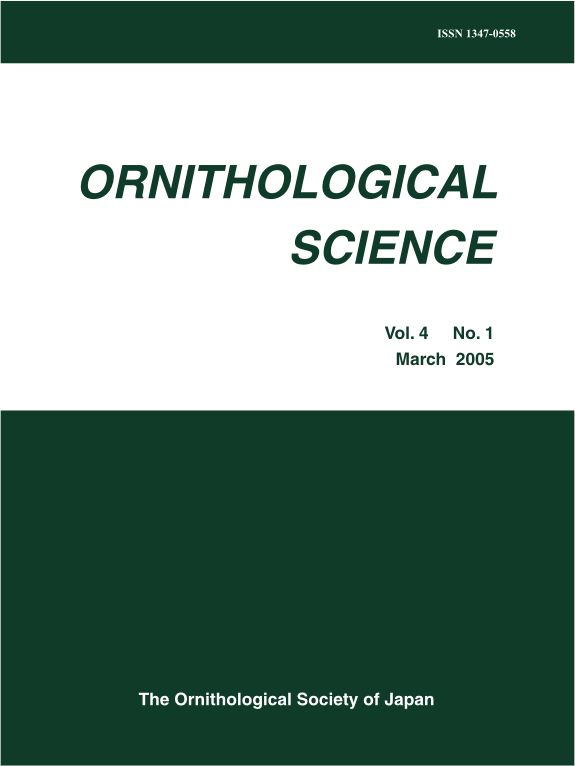9 巻, 1 号
選択された号の論文の10件中1~10を表示しています
- |<
- <
- 1
- >
- >|
SPECIAL FEATURE Monitoring bird populations
-
原稿種別: Special Feature
2010 年9 巻1 号 p. 1-2
発行日: 2010/06/25
公開日: 2010/07/10
PDF形式でダウンロード (36K) -
Wild bird indicators: using composite population trends of birds as measures of environmental health原稿種別: Special Feature
2010 年9 巻1 号 p. 3-22
発行日: 2010/06/25
公開日: 2010/07/10
PDF形式でダウンロード (862K) -
原稿種別: Special Feature
2010 年9 巻1 号 p. 23-36
発行日: 2010/06/25
公開日: 2010/07/10
PDF形式でダウンロード (590K) -
原稿種別: Special Feature
2010 年9 巻1 号 p. 37-48
発行日: 2010/06/25
公開日: 2010/07/10
PDF形式でダウンロード (643K) -
原稿種別: Special Feature
2010 年9 巻1 号 p. 49-53
発行日: 2010/06/25
公開日: 2010/07/10
PDF形式でダウンロード (174K) -
原稿種別: Special Feature
2010 年9 巻1 号 p. 55-65
発行日: 2010/06/25
公開日: 2010/07/10
PDF形式でダウンロード (399K)
ORIGINAL ARTICLES
-
原稿種別: Original Article
2010 年9 巻1 号 p. 67-74
発行日: 2010/06/25
公開日: 2010/07/10
PDF形式でダウンロード (1900K) -
原稿種別: Original Article
2010 年9 巻1 号 p. 75-82
発行日: 2010/06/25
公開日: 2010/07/10
PDF形式でダウンロード (190K) -
原稿種別: Original Article
2010 年9 巻1 号 p. 83-91
発行日: 2010/06/25
公開日: 2010/07/10
PDF形式でダウンロード (225K) -
原稿種別: Original Article
2010 年9 巻1 号 p. 93-100
発行日: 2010/06/25
公開日: 2010/07/10
PDF形式でダウンロード (950K)
- |<
- <
- 1
- >
- >|
